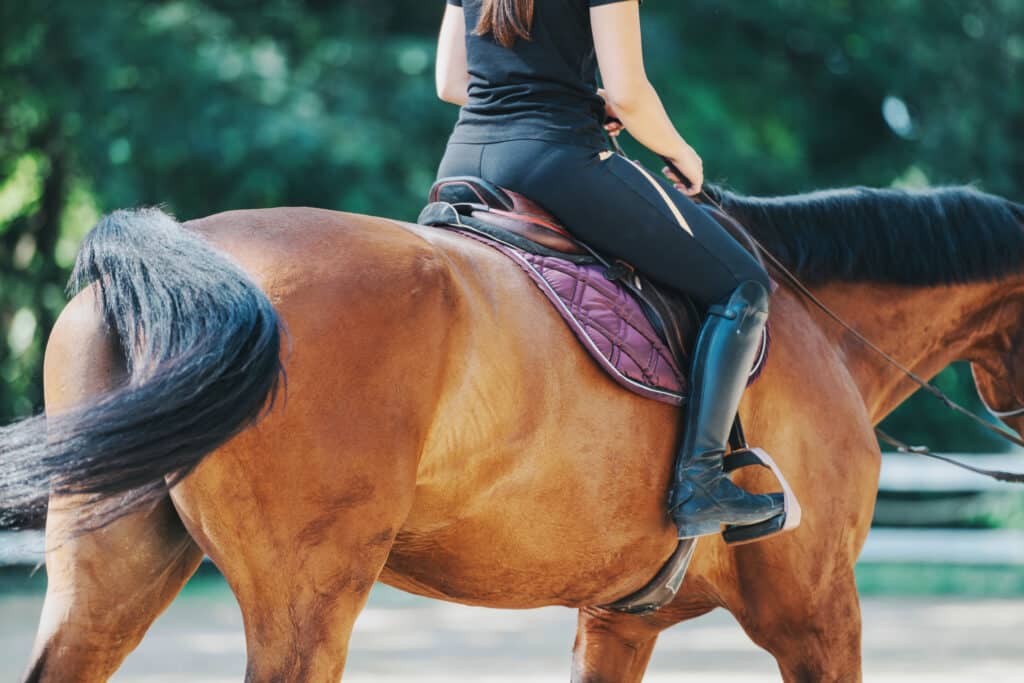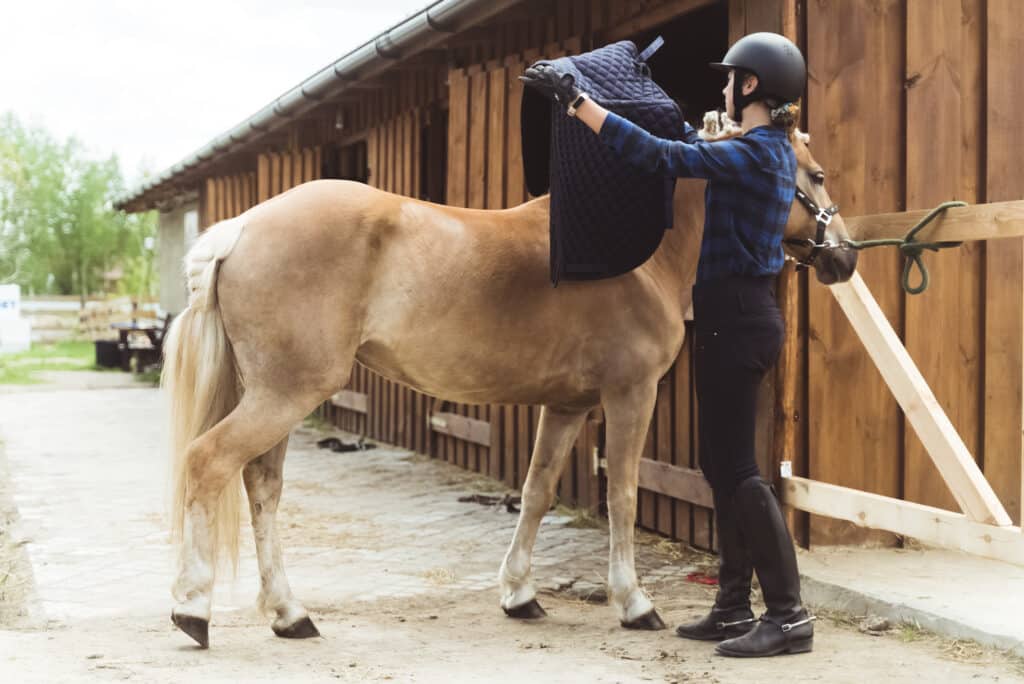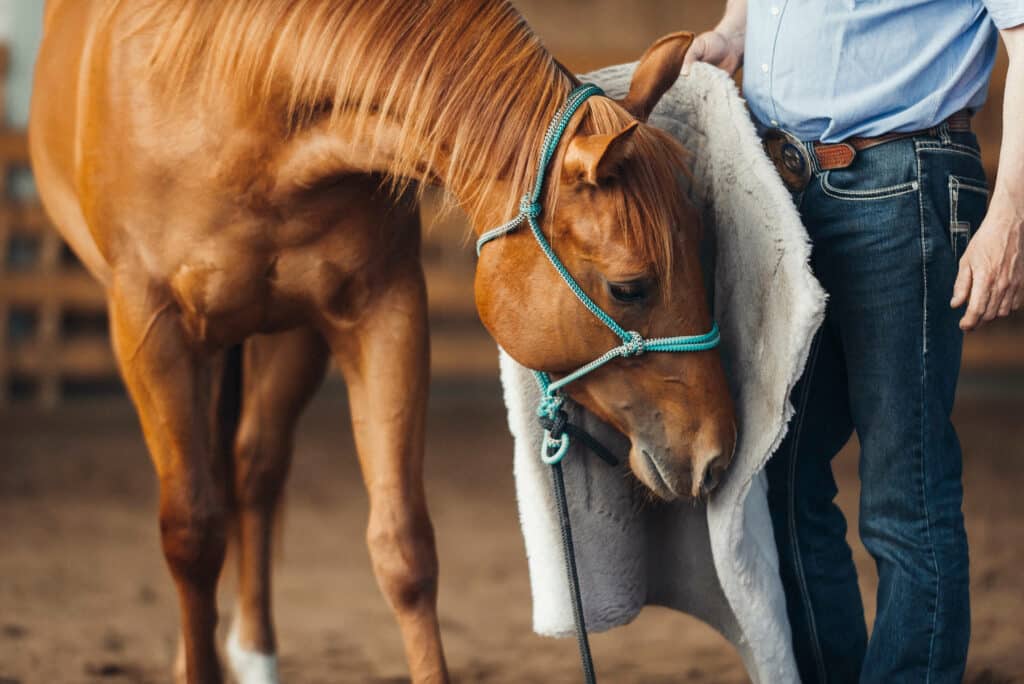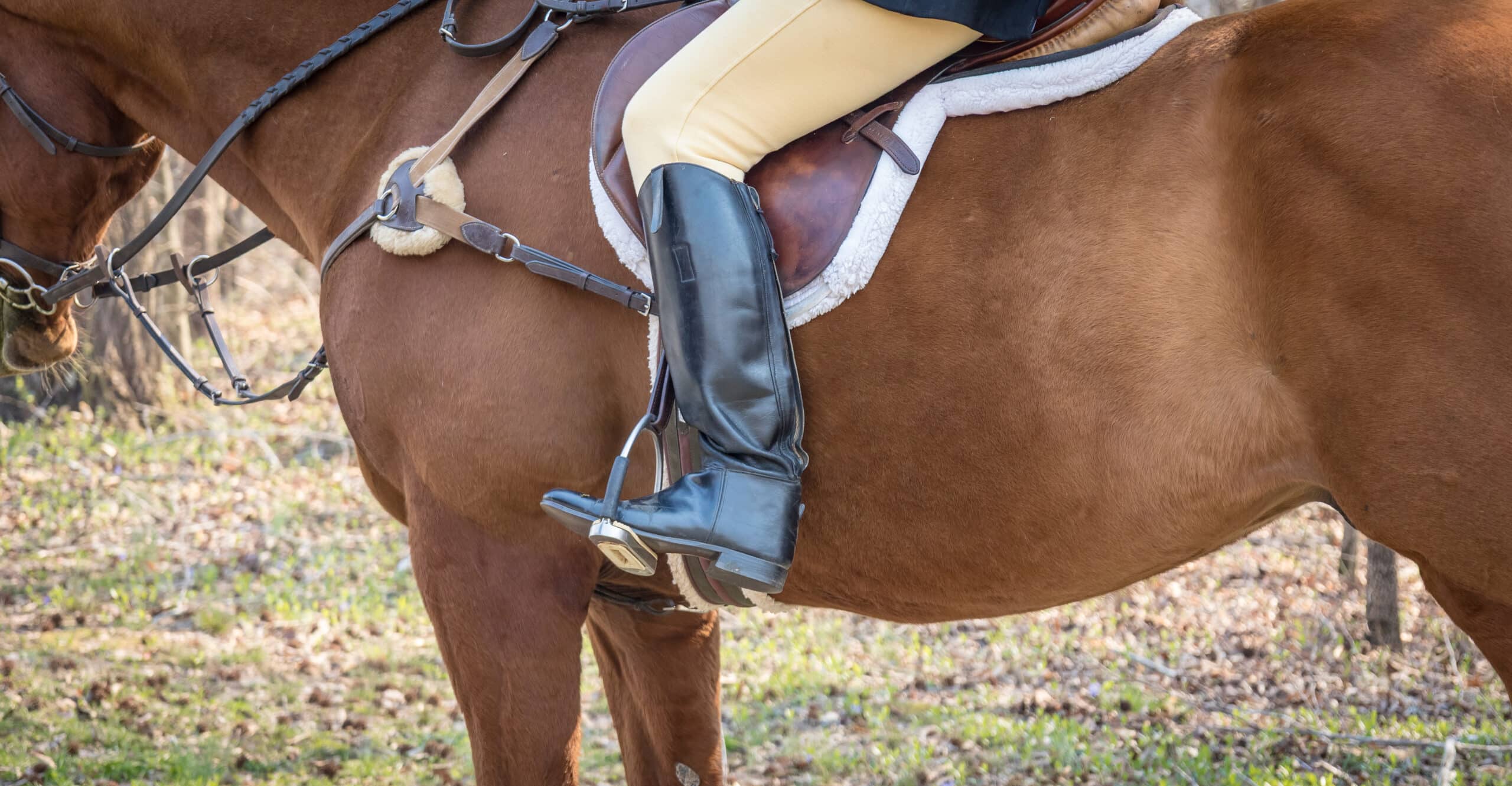Top 7 Things to Know Before Buying Saddle Pads
When choosing saddle pads, it’s important to note that it is just as critical as picking the right saddle. Well-fitted saddle pads can protect your horse’s back, may help improve the fit of the saddle, may help absorb shock, and may help prevent injury and soreness along with protecting your saddle from sweat and dirt. But with so many styles, materials, and functions to consider – how do you know which one is right for your horse?
At The Trainer’s Loft, we carry a wide range of new and used saddle pads for every discipline and riding level. Whether you are trail riding on the weekends or showing competitively, here is how you can make sure your saddle pad supports not only your horse’s performance, but also their comfort and overall wellbeing. To see our current selection of saddle pads, click here!

1. Understand the Function of Saddle Pads
While some riders view the saddle pad as a simple barrier between the saddle and the horse, it can play several other critical roles as well. Keep these functions in mind as you browse different types of saddle pads and the materials they come in:
- Cushioning and shock absorption
- Moisture-wicking to keep your horse cool and dry
- Protecting the saddle from sweat and dirt
- Adjusting minor saddle fit issues
2. Evaluate Your Saddle Fit First
Before you choose a pad, be sure to check your saddle fit. If the saddle is not properly fitted, no pad will fully compensate for that. A properly fitted saddle with the right pad will distribute the pressure evenly and minimize the risk of discomfort or even injury. If you’re unsure about the fit of your saddle, a saddle fitter or equine chiropractor can assist.
That said, certain saddle pads can help fine tune the fit of your saddle by lifting or cushioning specific areas. If you need your pad to help adjust saddle fit, consider a pad with shim pockets.
3. Consider the Type of Riding You Do
Your discipline also needs to be considered when selecting a saddle pad:
- Trail riding: Comfort is key here. Look for breathable, shock absorbing pads that hold up to long hours and uneven terrain, like memory foam or wool felt.
- Western Riding: Thicker pads with spine relief are common as Western saddles do not have the flocking that English pads do. Contoured pads can help with even pressure distribution and wither relief, making the ride more comfortable for you and your horse.
- English Riding (Dressage, jumping, etc.): Thinner, close contact pads like square quilted cotton or half pads allow for better communication with your horse.

4. Match the Saddle Pads to Your Horse’s Conformation
Each horse is built differently. Choosing a pad that complements your horse’s back shape can prevent pressure points, pinching, and rubbing:
- High withers: Look for high-wither cut or shaped pads with extra clearance.
- Swayback: Use saddle pads that fills in the dip along the back to prevent bridging.
- Round back/low withers: You may need a pad that helps keep the saddle from slipping.
5. Know Your Saddle Pad Materials
Different materials offer different benefits for you and your horse. Choose a material based on your climate, riding frequency, and your horse’s sensitivity:
- Wool: Natural, breathable, and moisture-wicking. Wool conforms to your horse’s shape over time and offers excellent shock absorption.
- Felt: Usually made from compressed wool or synthetic blends. Durable and supportive.
- Memory Foam: Excellent shock absorption and pressure distribution. Great for sensitive horses.
- Gel Inserts: Often found in half pads. Provides targeted cushioning but can trap heat.
- Cotton: Lightweight and breathable, commonly used for English pads. Easy to wash and affordable.
6. Half Saddle Pads: Do You Need One?
Half pads are supplemental pads that are used over a regular saddle pad for added support or fit correction. They are popular in English disciplines. Gel, foam, sheepskin, and shimmed half pads are all options. Just be sure not to over-pad, as that can worsen saddle fit. Half pads are helpful when:
- You’re correcting minor saddle fit issues
- You want extra cushioning for a sensitive-backed horse
- You need to balance the saddle front to back

7. Maintenance and Longevity
Your saddle pad works hard! A worn out saddle pad will not protect your horse properly. Keep it in top shape by:
- Cleaning it regularly (check if it’s machine-washable or needs special care)
- Inspecting for wear like thinning, compression, or broken stitching
- Rotating pads if you ride frequently to extend their lifespan
Choosing A Saddle Pad
A saddle pad is not just a pretty accessory – it is a vital piece of your horse’s comfort and health. By considering your riding style, horse’s anatomy, and the fit of your saddle, you can choose the right pad that offers support and protection for many rides to come.
Visit The Trainer’s Loft to browse our collection of new and used saddle pads. Our knowledgeable team is always happy to help you find the right fit for your horse, your saddle, and your budget.

